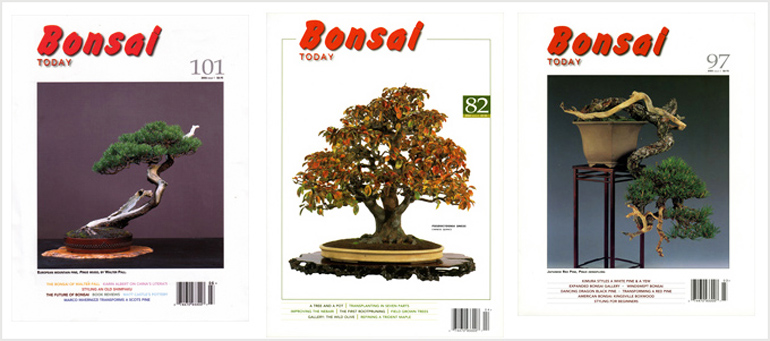 When I first saw this tree I thought it might be a Yew. But, the bark isn’t right, and even the foliage, though close, isn’t quite right either. Fortunately, Peter Tea solved the problem in his 2011 Taikan-ten Exhibition post. Peter’s caption reads: “This
When I first saw this tree I thought it might be a Yew. But, the bark isn’t right, and even the foliage, though close, isn’t quite right either. Fortunately, Peter Tea solved the problem in his 2011 Taikan-ten Exhibition post. Peter’s caption reads: “This Yew Hemlock caught many peoples attention. It made sense that it took the prize for medium conifer. We don’t have any Yews here at Aichien because they don’t do well in the hot weather that we have in Nagoya.”
As for the species, it turns out that there are two Hemlocks that are native to Japan (Tsuga sieboldii & Tsuga diversifolia). My guess is that this powerful and distinctive tree is one of these two. All the photos in this post are from Empire Bonsai.
Busy today, so we’ll dip into our archives once again. This post originally appeared almost two years ago (Febuary, 2013). I chose it because it leads with a Hemlock and our last post was about a Hemlock. Any other similarities are purely coincidental.
For now, it’s still Japan
In spite of reports to the contrary, Japan is still the world leader when it comes to bonsai (taking nothing away from Taiwan, Indonesia, Europe or the rest of the world). Not that the situation is not in flux, but all you need to do is take a look at a selection of trees from the major Japanese exhibitions (in the case it’s the 2011 Taikan-ten), and if your eyes are not clouded by chauvinism, you can see for yourself.
One of the raps on Japanese bonsai that you might hear is how it’s become too predictable, even conventional, and that the trees are overly stylized. The problem with this view is that it’s not true. When you look at the best of Japanese bonsai, what you see instead, is a diverse and exciting range of trees, some more stylized, some more traditional, some very innovative and daring, some all of the above, and all marked by a mastery of technique (more on technique at the bottom of this post).
 Trident maple. Among a thousand other things, I like that the lowest branch on the main trunk is in the front and is smaller than branches that are higher on the tree. How many of us would have cut this branch off because convention tells us to?
Trident maple. Among a thousand other things, I like that the lowest branch on the main trunk is in the front and is smaller than branches that are higher on the tree. How many of us would have cut this branch off because convention tells us to?
 I’m going to guess that this strange and wonderful tree is a Needle juniper (Juniperus rigida). Like all the tree in this post, it’s from the 2011 Taikan-ten.
I’m going to guess that this strange and wonderful tree is a Needle juniper (Juniperus rigida). Like all the tree in this post, it’s from the 2011 Taikan-ten.
 Something a little different. It’s mostly about the berries with this Firethorn (Pyracantha). When they’re gone, this rock planting will be consigned to a back bench.
Something a little different. It’s mostly about the berries with this Firethorn (Pyracantha). When they’re gone, this rock planting will be consigned to a back bench.
 Looks like a Japanese beech (Fagus creanta). No need to say much more.
Looks like a Japanese beech (Fagus creanta). No need to say much more.
 Azalea’s are usually shown with flowers. However, with trees of this magnitude…
Azalea’s are usually shown with flowers. However, with trees of this magnitude…
 Want to learn how they do it? Some say that it’s 90% technique and 10% artistry. Bonsai Today magazine is filled with detailed instructions technique from the old masters. These benchmark back issues, are now 50% off at Stone Lantern.
Want to learn how they do it? Some say that it’s 90% technique and 10% artistry. Bonsai Today magazine is filled with detailed instructions technique from the old masters. These benchmark back issues, are now 50% off at Stone Lantern.